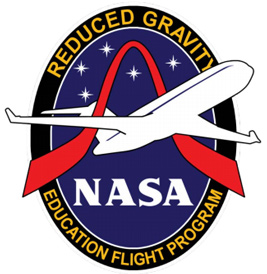Northwestern Students to Conduct Experiment in NASA’s ‘Vomit Comet’
The team hopes to learn more about why bones become weaker in space
Five Northwestern University undergraduates will soon get the chance to feel as if they are in space and conduct scientific experiments in zero gravity like astronauts without ever leaving Earth’s atmosphere in NASA’s famous “Vomit Comet.”
The students, along with a two-person ground crew and an alternate flyer, are part of the Northwestern University Microgravity Team (NUMT), one of 18 teams selected to be in this year’s NASA Reduced Gravity Flight Opportunities Program. More than 100 teams from schools across the nation applied for the privilege.
The team’s flight aboard a NASA plane that creates a weightless experience will be the week of April 4-12, and they will use it to do biomedical research on how bones are affected in space.
 “During our week in Houston, we will have exclusive tours through Johnson Space Center and will be given clearance to Ellington Air Field,” said Andrew Kozminski, team leader and biology senior in the Weinberg College of Arts and Sciences. “We will go through training on how to maintain ourselves in zero gravity and 2G’s, which we will experience as the aircraft ascends.”
“During our week in Houston, we will have exclusive tours through Johnson Space Center and will be given clearance to Ellington Air Field,” said Andrew Kozminski, team leader and biology senior in the Weinberg College of Arts and Sciences. “We will go through training on how to maintain ourselves in zero gravity and 2G’s, which we will experience as the aircraft ascends.”
At the end of the week the team will have two days of flight, Kozminski said. Three students will fly on the first day and two students will fly on the second. On each day, the students will have 30 different opportunities to experience zero gravity in flight. They’ll use 25 of those to perform their experiment. The rest will be pure fun.
NASA uses a modified Boeing 727-200 aircraft to fly parabolas at high altitudes that create short periods of zero gravity to simulate the weightlessness of space flight.
The team has high hopes that their experiment will provide some insight into why our bones become weaker in space.
“Maybe the way bone cells communicate gets messed up,” Kozminski said.
“Cells need to communicate in order to maintain almost every function, and one major way they do this is by actually pushing and pulling on one another,” he said. “Proteins in each cell, in this case the protein Actin, have the ability to form a scaffolding system that transmits signals back to their control center based on how they are physically moved. We want to see how these systems might differ in zero gravity.”
The team hopes its results can be helpful not only to those hoping to travel into space, but to millions suffering from bone-related diseases as well.
“As a chemical engineering major, working on this project has been a push and pull for time, but every minute is one thousand percent worth it,” said Kat Dhiantravan, a sophomore in the McCormick School of Engineering and Applied Science on the team. “I am so grateful for this opportunity and incredibly excited that this is a part of my college experience.”
Members of the Northwestern University Microgravity Group come from Northwestern’s McCormick School of Engineering and Applied Science and the Weinberg College of Arts and Sciences and include:
- Andrew Kozminski – Senior – Biological Sciences - Flyer
- Sergio Williams – Senior – Materials Science Engineering - Flyer
- Kat Dhiantravan – Sophomore – Chemical Engineering - Flyer
- Malcolm Lazarow – Sophomore – Applied Mathematics - Flyer
- Michael Muzyka – Senior – Biological Sciences – Ground Support
- Rebecca Diesing – Freshman – Physics - Flyer
- Adam Awwad – Senior – Biological Sciences – Ground Support
- Newlin Weatherford – Freshman – Integrated Science – Alternate Flyer
Funding for the group’s experiment has come from Boeing, SpaceX, the McCormick School of Engineering and Applied Science, the Weinberg College of Arts and Sciences and the Office of Northwestern University Provost Daniel Linzer.